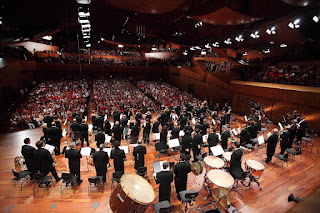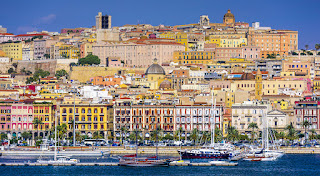Silvio Gazzaniga - sculptor
Milanese artist who designed FIFA World Cup trophy
Silvio Gazzaniga, the sculptor and medal-maker who created the trophy held aloft every four years by the winners of football’s World Cup, was born in Milan on this day in 1921. Gazzaniga designed the trophy, with its spiralling lines depicting two players, with arms outstretched in triumph, carrying a globe on their shoulders, in 1971, after entering a competition organised by football’s world governing body, FIFA. The organisation had been faced with a dilemma after the 1970 World Cup, when champions Brazil earned the right to keep the Jules Rimet Trophy, the prize for which the competition was originally played, by winning for the third time. In the knowledge that they would need a new trophy before the next tournament, in 1974, they invited designers to submit their ideas, eventually collecting 53 proposals from artists all over the world. Among them was the submission from Gazzaniga, a football fan and the artistic director of Bertoni, a small firm making medals and trophies now based at Paderno Dugnano, a town on the outskirts of Milan. Gazzaniga did much of his work in a modest studio in the artists’ quarter of the Lombardy capital. Read more…
______________________________________
Luisa Casati – heiress and muse
Outrageous marchioness saw herself as a living work of art
The heiress, socialite and artist’s muse Luisa Casati, known for her outlandish dresses, exotic pets and hedonistic lifestyle, was born on this day in 1881 in Milan. Casati, born into a wealthy background, married a marquis – Camillo, Marchese Casati Stampa di Soncino – when she was 19 and provided him with a daughter, Cristina, a year later, yet the marriage was never strong and they kept separate residences from an early stage. It was not long before she tired of a life bound by formalities and the strict rules of etiquette and everything changed after she met the poet, patriot and lothario Gabriele D’Annunzio at a society hunt. They became lovers and D’Annunzio introduced her to the world of writers and artists. Tall, almost painfully thin and with striking looks, she became a creature of fascination for many young artists, who craved the attention of this eccentric aristocrat and the chance to paint her. Their interest only encouraged the Marchesa Casati to indulge her taste for the extravagant, posing in ever-more outlandish dresses, embracing the culture of the Belle Époque. Her wealth enabled her to throw lavish parties. Read more…
_____________________________________
Salvatore Lima - politician
Christian Democrat MEP murdered by Mafia
Salvatore Lima, a politician strongly suspected of being the Sicilian Mafia’s ‘man in Rome’ until he was shot dead near his seaside villa in 1992, was born on this day in 1928 in Palermo. The Christian Democrat MEP, usually known as Salvo, had long been suspected of corruption, from his days as Mayor of Palermo in the 1950s and 60s to his time as a member of the Chamber of Deputies, between 1968 and 1979, when he formed a close association with Giulio Andreotti, the three-times Italian prime minister whose rise to power was helped considerably by the support Lima was able to garner for him in Sicily. Lima's links with the Mafia were established by a magistrates’ enquiry into his death when it was concluded that he was killed on the orders of the then all-powerful Mafia boss Salvatore ‘Toto’ Riina as an act of revenge following Lima’s failure to have sentences against 342 mafiosi accused in the so-called 'maxi-trial' of 1986-87 annulled or at least reduced. He had allegedly promised his Cosa Nostra paymasters that he would see to it that a Supreme Court judge with a reputation for overturning sentences against suspected Mafia members was appointed prosecutor. Read more…
____________________________________
Giovanni Michelotti – car designer
The many Triumphs of Turin sports car genius
One of the most prolific designers of sports cars in the 20th century, Giovanni Michelotti died on this day in 1980 in Turin. Known for his hard work and creative talent, Michelotti has been credited with designing more than 1200 different cars. He worked for Ferrari, Lancia and Maserati in Italy but car firms abroad soon got to know about him and he also designed for Triumph and BMW. Michelotti was born in Turin in 1921 and worked for coach building firms before opening his own design studio in 1959. The first of his designs put into production was for an Alfa Romeo 6C 2500 in 1947. Among the legendary sports cars designed by Michelotti in Italy are the Ferrari 166 MM and the Maserati Sebring. In Britain he was responsible for many successful Triumphs, including the famous Spitfire, Stag and TR4. He also designed buses and trucks for British Leyland. Under his own name he designed a beach car, the Shellette, with wicker seats. Only about 80 were made, but among the buyers were the Dutch royal family, who used it at their summer property in Porto Ercole, and Jacqueline Onassis. Read more…
_____________________________________
Muzio Clementi – composer and pianist
Musician is remembered as ‘father of the piano’
Composer Muzio Clementi, whose studies and sonatas helped develop the technique of the early pianoforte, was born on this day in 1752 in Rome. He moved to live in England when he was young, where he became a successful composer and pianist and started a music publishing and piano manufacturing business. He also helped to found the Royal Philharmonic Society in London. Clementi was baptised Mutius Philippus Vincentius Franciscus Xaverius the day after his birth at the Church of San Lorenzo in Damaso in Rome. His father was a silversmith, who soon recognised Clementi’s musical talent and arranged for him to have lessons from a relative, who was maestro di cappella at St Peter’s Basilica. By the time he was 13, Clementi had already composed an oratorio and a mass and he became the organist at his parish church, San Lorenzo in Damaso, at the age of 14. Sir Peter Beckford, a wealthy Englishman, was so impressed with Clementi’s musical talent and his skill with the harpsichord when he visited Rome in 1766 that he offered to take him to England and sponsor his musical education until he was 21. Read more…
Home
.jpeg.jpeg)


.jpg)
.jpg)


.jpg)


.jpg)

.jpg)
%20(1).jpg)


_coverart.jpg)
.jpg)







.jpg)
.jpg)
.jpg)


.jpg)
.jpg)


